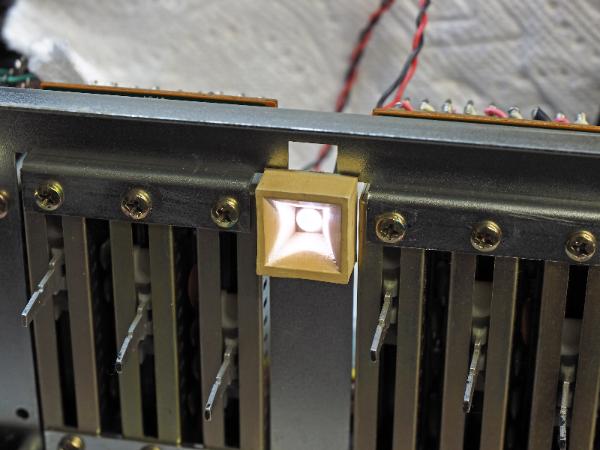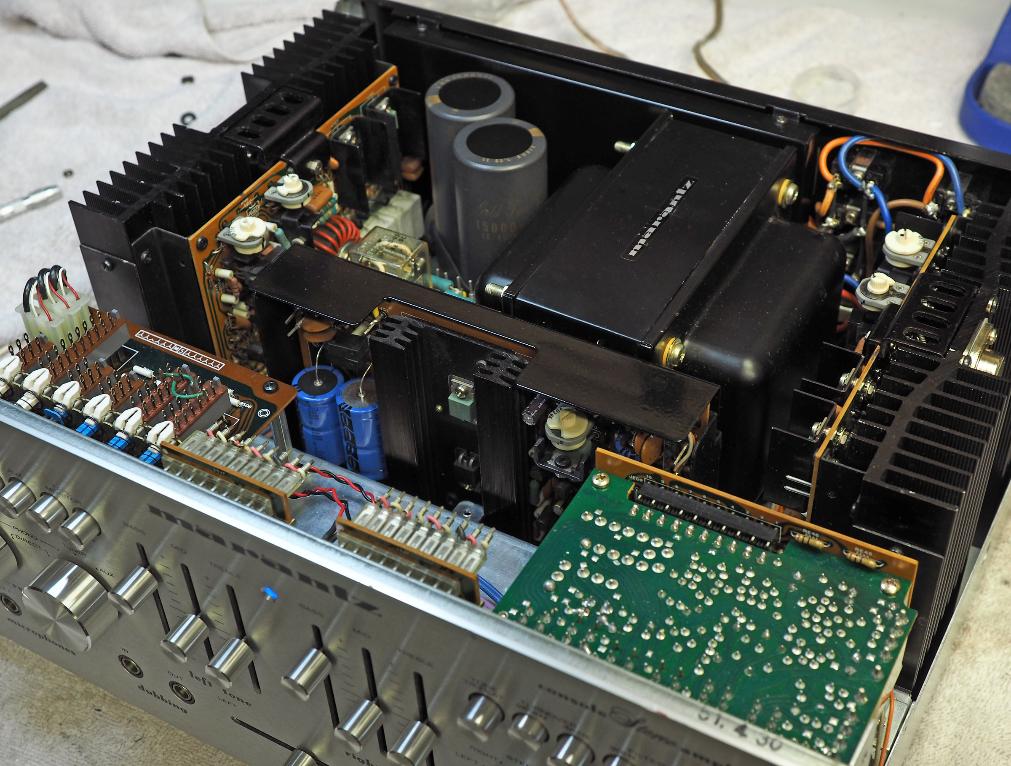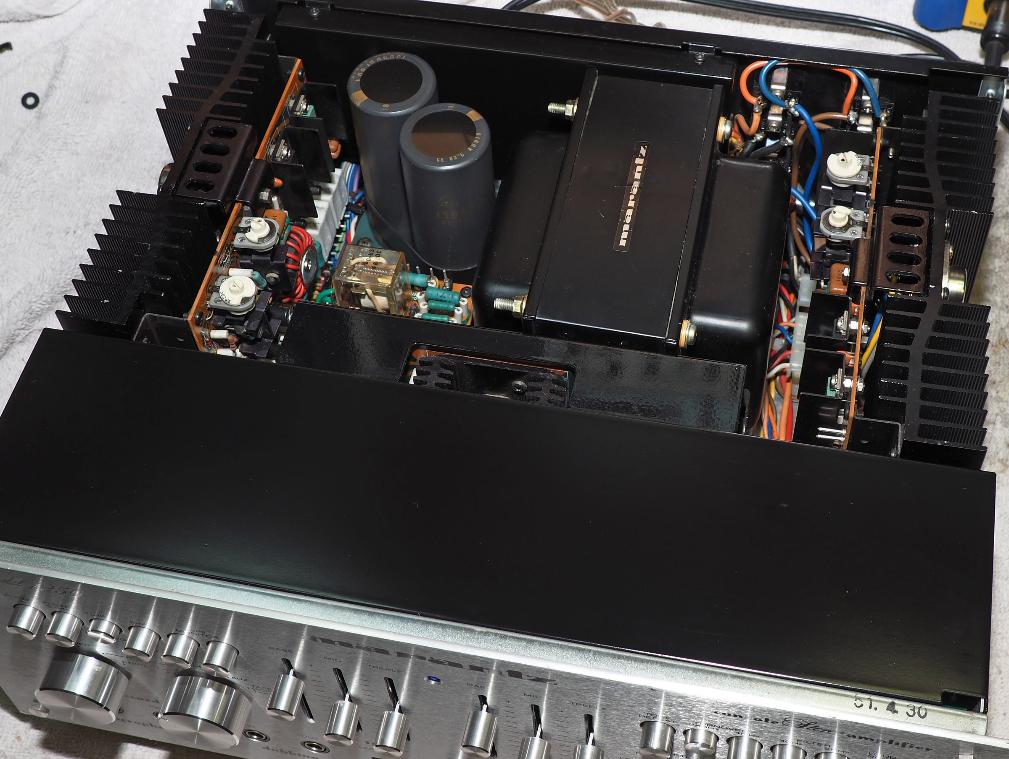




A 5MM LED was used to replace the 8v
incandescent lamp. Generally, LEDs of this type
require 2.5v to 3.5v volts DC. I built a small power
supply from a small section of PCB bread-board.
It consist of a full bridge rectifier to convert the
8v AC to 8v DC with ripple (a little over kill, but I
have a ton of these sitting around). There is a
capacitor to smooth the ripple out, and a resistor
to cut the voltage to the needed 3v DC. The back
of the PCB is encased in epoxy and mounted to
the chassis with 3M rubber mounting tape.
A lot of folks just use a small signal diode and a
resistor to provide a rippled pulsed DC voltage
(half wave that rises and falls). This causes the
LED to flicker at The AC cycle rate (60 cycles per
second for a 120v AC transformer). This is hard
on the LED and cuts the visual brightness.
This full bridge rectifier will provide a smooth
constant 3v DC to the LED. It should shine bright
for a very long time.
incandescent lamp. Generally, LEDs of this type
require 2.5v to 3.5v volts DC. I built a small power
supply from a small section of PCB bread-board.
It consist of a full bridge rectifier to convert the
8v AC to 8v DC with ripple (a little over kill, but I
have a ton of these sitting around). There is a
capacitor to smooth the ripple out, and a resistor
to cut the voltage to the needed 3v DC. The back
of the PCB is encased in epoxy and mounted to
the chassis with 3M rubber mounting tape.
A lot of folks just use a small signal diode and a
resistor to provide a rippled pulsed DC voltage
(half wave that rises and falls). This causes the
LED to flicker at The AC cycle rate (60 cycles per
second for a 120v AC transformer). This is hard
on the LED and cuts the visual brightness.
This full bridge rectifier will provide a smooth
constant 3v DC to the LED. It should shine bright
for a very long time.
Below is the completed unit, The lower image has the front-end shield in place which give the unit a very clean look. I liked the unit so much I
really wanted to hold on to it... and did for nearly a year. It played music in the shop from a Nikko Gamma V tuner and a set of ADS L810 speakers.
But, the units are stacking up and I had to make a choice on which one I should hold on to and which had to go.I decided to hold on to the
Pioneer 1250, the Kenwood 700C/Nikko Beta 40 combo, and the Kenwood 7600 (only because it fit in the small space in the TV cabinet). I also
have a Marantz 2270 on the bench that is nearly complete and a dozen more units in the wings waiting for their turn on the bench. If I had a place
to put this Marantz, it would certainly be a keeper.
really wanted to hold on to it... and did for nearly a year. It played music in the shop from a Nikko Gamma V tuner and a set of ADS L810 speakers.
But, the units are stacking up and I had to make a choice on which one I should hold on to and which had to go.I decided to hold on to the
Pioneer 1250, the Kenwood 700C/Nikko Beta 40 combo, and the Kenwood 7600 (only because it fit in the small space in the TV cabinet). I also
have a Marantz 2270 on the bench that is nearly complete and a dozen more units in the wings waiting for their turn on the bench. If I had a place
to put this Marantz, it would certainly be a keeper.